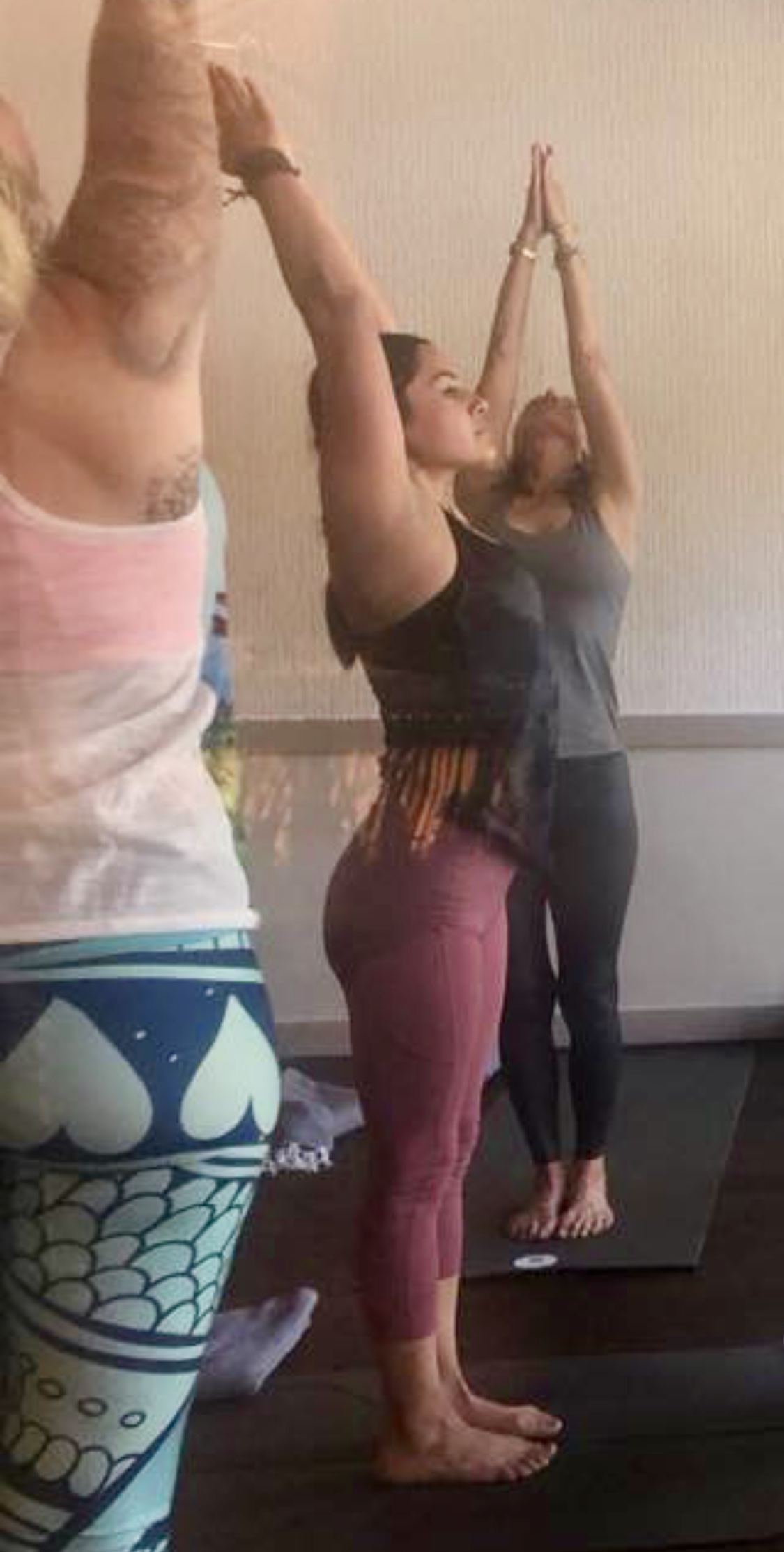We know that siting up straight is good for us and correct posture relieves back pain, improves breathing and conveys confidence, but there is so much more that should be revealed. Physical posture affects health, vitality and awareness.
David Frawely, an expert in the science of yoga, has researched the subject of anatomical posture in relation to yoga asanas (poses). He found that the mind/body complex consists of various interrelated channels of energy traveling throughout the body that are supported by the musculoskeletal system, the shape of which, is determined by ones posture. It is an intricate network that carries everything from the food we eat to what we think.
Let’s start with slouching posture. It causes stress on the joints and muscular contractions that eventually impair mobility. Incorrect posture blocks the proper flow of energy provided by muscles, glands, and nerves to name a few interrelated channels. It inhibits the circulation of energy and nutrients while allowing toxins and waste materials to accumulate. Such impediments can be a source of discomfort and reduce functioning, eventually causing pain and disease. As the mind and body are interconnected, physical blockages are intertwined with mental and emotional channels. When they become obstructed, it manifests in the form of addictions, compulsions, and attachments.

The physical body is centered around the digestive tract. If our posture is misaligned then movement through the digestive tract is hindered. This lowers the function of digestion, which in turn weakens the metabolic cycle leading to other ailments. It makes sense that tightness in the upper back and chest reduces pulmonary function and weakens the proper signals that lead to the brain, but tightness in the middle back and mid-abdomen also weakens the digestion in the small intestine. The squeezing and accumulated tension causes malabsorption of food. So too, tightness or weakness in the lower back and abdomen constricts and weakens the colon. This creates gas and distention and upsets elimination, resulting in constipation or diarrhea among other problems. Incorrect posture prevents the natural upward power of prana (subtle energy) through which we stand straight, feel happy and positive. It is the energy that we ride to thrive, grow and evolve in life.
Because misalignments of the joints and bones causes nerve impulses to be disrupted, posture plays a part on the nervous system. For instance, tension in the neck reduces blood flow to the head and lowers mental energy. This contributes to headaches and sinus allergies. Since the nervous system is closely connected with the skeletal system and according to Ayurvedic philosophy, nerve tissue develops from bone tissue, (different from bone itself) so prana is affected by the bones. Misalignments lead to stiffness and stiffness leads to reduced movement. This tension gets transferred to the nerves that result in its own kind of stiffness such as insomnia, anxiety and emotional instability. Since the nervous system is primarily housed in the spine, all distortions of the spine will cause corresponding nerve tension and problems.
By loosening the joints through yoga postures, the accumulated stiffness is relieved improving awareness on all levels. Fear and stress cause the body to tighten up. Such emotions get held in the bones and prevent energy from moving freely.
The Benefit of Asana
Asana is the basic tool for balancing the physical body. The static postures and physical movements performed are designed to release tension, improve flexibility, maximize the flow of energy as well as removing friction. Another purpose of asana is to create a free flow of energy that helps direct the mind and improve attention within. So, it builds posture from the inside-out as well.
Asana has tremendous therapeutic effects on the body, mind and prana. The physical structure is improved with correct posture, our creative intelligence, and our level of accessible energy are all greatly enhance with the poses of yoga. Unfortunately, most of us today neglect our posture and do little to develop flexibility. Whatever exercise we do is usually a strained or stressful type. Aerobic exercises like running or weight lifting are helpful, but should be followed with stretching since they can add to tightness and tension.
Anyone who works sitting at an office desk particularly at the computer, will tend towards an overstretched back and an atrophied chest. A job that requires repetitive motion will produce posture that is distorted in the direction of the work. Lounging chairs also distort the bodys ergonomics with a slumped position while we rest or watch TV.
Asanas that Improve Posture (click icon to see video)
Be aware of not getting too caught up in the process of asanas though. People who havea yoga routine may also be on their way to diminishing returns. Asanas done forcefully or focused on a goal rather than the process may be adding to stress rather than relieving it. Attempting to place the body in a position that it is not prepared for, or is not natural can result in tension or injury. Also, avoid asana done without detaching from an ego driven goal. Even if helpful on a physical level, can lead to an increased fixation on the body and rigidity of the mind and emotions.
More tips to improve posture:
- Avoid carrying heavy items on the same side every day. A quality backpack or rolling bag is best for books and laptops.
- When seated, plant your feet on the ground firmly. It will help with joint alignment.
- Visit a chiropractor to help assess body alignment, correct it if needed.
- Invest in a healthy chair and bed for sleeping and working. This will contribute to postural alignment and comfort.
It is amazing what simply sitting up straight can do for your health. Taking a few seconds to properly position your shoulders over your pelvis, lift your sternum and squeeze your shoulder blades down and back. Breath evenly and diaphagmatically. It’s is so easy—and with so many benefits.
Finally, correct posture creates an impression that reinforces positive body language.
By standing or sitting up straight, the impression people read is of confidence, especially to members of the opposite sex. Drooping has the opposite effect implying a lack self-assurance and weakness.
Don’t wait to sit or stand up straight start living a smarter healthier life!
References
Frawley, D. (1999). Yoga and Ayurveda. Twin Lakes, WI.: Lotus Publishing.
Yoga Journal. Library of Poses. (2012). Retrieved 11/3/2012. http://www.yogajournal.com/poses/finder/browse_categories.
physicalmedicine.org (20120) retrieved: 10/6/2012. http://www.advancedphysicalmedicine.org/blog/2010/07/26/benefits-of-good-posture-and-how-to-get-it/.



